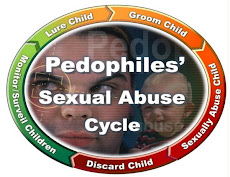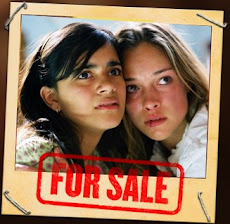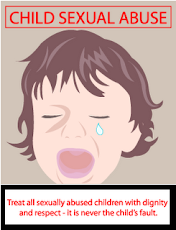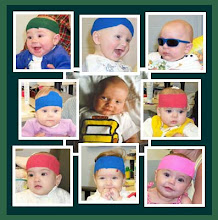Commercial sexual exploitation of children
Commercial sexual exploitation of children (CSEC) constitutes a form of coercion and violence against children and amounts to forced labour and a contemporary form of slavery.[1]
A Convention was drawn up after the first World Congress against Commercial Sexual Exploitation held in Stockholm in 1996. CSEC was defined in the declaration adopted at this congress as ‘sexual abuse by the adult and remuneration in cash or kind to the child or a third person or persons. The child is treated as a sexual object and as a commercial object.’ CSEC includes the prostitution of children; child pornography; and other forms of transactional sex where a child engages in sexual activities to have key needs fulfilled, such as food, shelter or access to education. It includes forms of transactional sex where the sexual abuse of children is not stopped or reported by household members, due to benefits derived by the household from the perpetrator. CSEC also potentially includes arranged marriages involving children under the age of 18 years, where the child has not freely consented to marriage and where the child is sexually abused.
Forms of sexual exploitation
Prostitution of children under the age of 18 years, child pornography and the (often related) sale and trafficking of children are often considered to be crimes of violence against children. They are considered to be forms of economic exploitation akin to forced labour or slavery. Such children often suffer irreparable damage to their physical and mental health. They face early pregnancy and risk sexually transmitted diseases, particularly AIDS. They are often inadequately protected by the law and may be treated as criminals.
Child trafficking and CSEC sometimes overlap. On the one hand, children who are trafficked are often trafficked for the purposes of CSEC. However, not all trafficked children are trafficked for these purposes. Further, even if some of the children trafficked for other forms of work are subsequently sexually abused at work, this does not necessarily constitute CSEC. On the other hand, by no means all children involved in CSEC have been trafficked. Many are involved in CSEC near their homes.
CSEC is also part of, but distinct from, child abuse, or even child sexual abuse. Child rape, for example, will not usually constitute CSEC. Neither will domestic violence.
Although CSEC is considered as child labour, and indeed one of the worst forms of child labor, in terms of international conventions, in legislation, policy and programmatic terms, CSEC is often treated as a form of child abuse or a crime.
Causes
The causes of CSEC are complex and patterns differ among countries and regions. For example, in some areas the commercial sexual exploitation of children is clearly related to foreign child sex tourism, in others it is associated with the local demand. In most countries, girls represent 80 to 90% of the victims, although in some places boys predominate.[citation needed]
As is the case for other worst forms of child labour, severe poverty, the possibility of relatively high earnings, low value attached to education, family dysfunction, a cultural obligation to help support the family or the need to earn money to simply survive are all factors that make children vulnerable to CSEC. In order to make a living children are sold into the sex trade to provide food and shelter and in some cases money to satisfy the addiction of a family member or themselves
There are other non-economic factors that also push children into commercial sexual exploitation. Children who are at greatest risk of becoming victims of CSEC are those that have previously experienced physical or sexual abuse. A family environment of little protection, where caregivers are absent or where there is a high level of violence or alcohol or drug consumption, induces boys and girls to run away from home, making them highly susceptible to abuse. Gender discrimination and low educational levels of caregivers are also risk factors. Children with extreme poverty and marginalized families in coastal areas also becoming victims of CSEC.
On the demand side, certain factors can aggravate the problem. For example, sex tourists are a source of demand for prostitution. The presence of military troops or of large public works may also create demand. Client preferences for young children, particularly in the context of the HIV/AIDS epidemic, pull in additional children. Additionally, the expansion of the Internet has facilitated the growth of child pornography.
Experience has shown that certain socio-economic characteristics, such as population density, concentration of night entertainment (bars and discos), high poverty and unemployment levels, movement of people, and access to highways, ports, or borders are also associated with CSEC.
Prevalence
While it is impossible to know the true extent of the problem, given its illegal nature, International Labour Organization (ILO) global child labour figures for the year 2003 estimate that there are as many as 1.8 million children exploited in prostitution or pornography worldwide. [2]
The Rapid Assessment survey, developed by the ILO's International Programme for the Elimination of Child Labour (IPEC) and UNICEF, relies on interviews and other, mainly qualitative, techniques, to provide a picture of a specific activity in a limited geographic area. It is a highly useful tool for collecting information on the worst forms of child labour, like CSEC, that is difficult to capture with standard quantitative surveys.
General knowledge offered to a child can decrease the likelihood of children being exploited into prostitution or pornography. A national campaign in Thailand provided “9 years of basic education, ... awareness-raising activities to change attitudes about child prostitution, and a surveillance system to prevent children from being coerced into prostitution. ” [3]
The United Nations Children's Fund (UNICEF) and the United Nations Population Fund (UNFPA) estimate that 2 million children are exploited in prostitution or pornography every year.[1]
An estimated 12,000 Nepalese children, mainly girls, are trafficked for sexual commercial exploitation each year within Nepal or to brothels in India and other countries.[2]
Some 84 % of girls in prostitution interviewed in Tanzania reported having been battered, raped or tortured by police officers and sungu sungu (local community guards). At least 60% had no permanent place to live. Some of these girls started out as child domestic workers. [2]
UNICEF estimates that there are 60,000 child prostitutes in the Philippines and many of the 200 brothels in the notorious Angeles City offer children for sex.[4]
In El Salvador, one-third of the sexually exploited children between 14 and 17 years of age are boys. The median age for entering into prostitution among all children interviewed was 13 years. They worked on average five days per week, although nearly 10% reported that they worked seven days a week. [2]
In Vietnam, family poverty, low family education and family dysfunction were found to be primary causes for CSEC. Sixteen per cent of the children interviewed were illiterate, 38 % had only primary-level schooling. Sixty-six per cent said that tuition and school fees were beyond the means of their families. [2]
In Sri Lanka, children often become the prey of sexual exploiters through friends and relatives. The prevalence of boys in prostitution here is strongly related to foreign tourism. [2]
The New York State Office of Children and Family Services estimates that New York City is home to more than 2,000 sexually exploited children under 18. At least 85 percent of these youths statewide have had some contact with the child welfare system, mostly through abuse or neglect proceedings. In New York City, 75 percent have been in foster care. Most are female and black. [5] Mishi Faruqee, who is in charge of juvenile justice issues for the Correctional Association of New York, questioned the reliability of the estimate. “We believe that number is really an undercount." [6] The average age for entry into prostitution is 12 in New York, and according to Rachel Lloyd, founder of an organization called GEMS that helps under-age girls in the sex trade, “Many of the guys who buy sex with children would never consider themselves pedophiles. They’re not necessarily out there looking for 12-year-olds or teenagers. They just kind of don’t care."[citation needed] The Safe Harbor for Exploited Youth Act, legislation which would have provided services for sexually exploited youth instead of incarceration--making treatment of domestic youth parallel to that of foreign trafficking victims-- did not pass in New York in 2008. The New York Times criticized both the failure of the state government to pass the Act, and called for a "paradigm shift," away from blaming sexually exploited youth for their own exploitation, "If a 35-year-old pimp puts a 16-year-old girl on the street and a 30-year-old john pays to have sex with her, how is it reasonable that the girl is most often the point in that triangle that is targeted by law enforcement?" [7]
References
- http://www.yapi.org/csec/
- "Facts on commercial sexual exploitation of children" (PDF). ILO (2004).
- Willis, BM and Levy, BS (2002). "Child prostitution: global health burden, research needs, and interventions".
- BBC Politics 97
- Report Finds 2,000 of State’s Children Are Sexually Exploited, Many in New York City". New York Times (2007).
- Clyde Haberman. "The Sexually Exploited Ask for Change: Help, Not Jail", New York Times.
- Bob Herbert (2008). "The Wrong Target".
.jpg)









.png)

Tidak ada komentar:
Posting Komentar